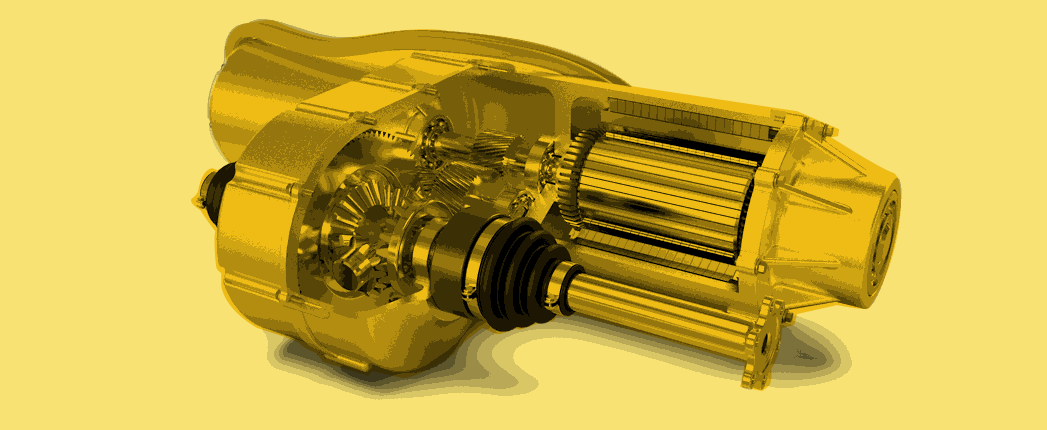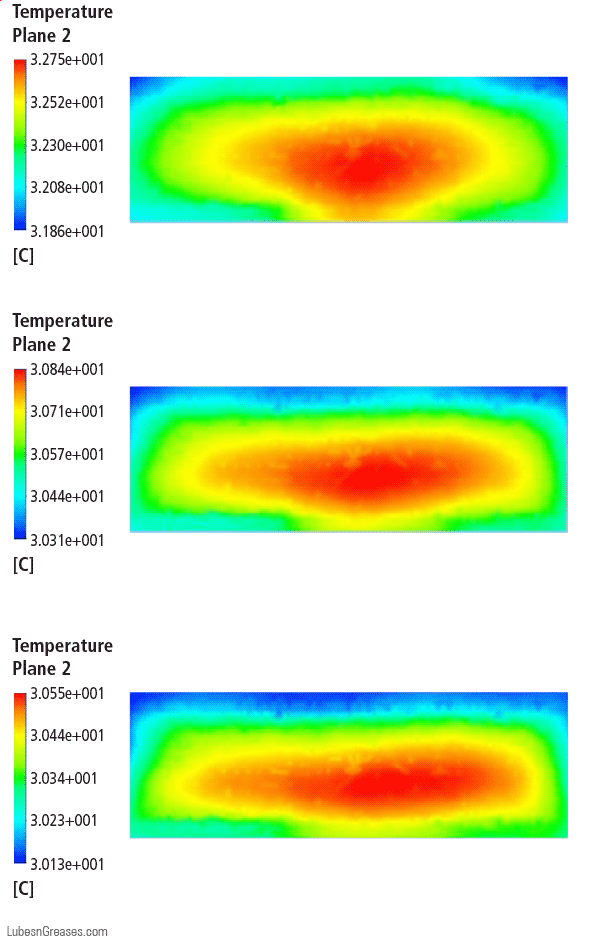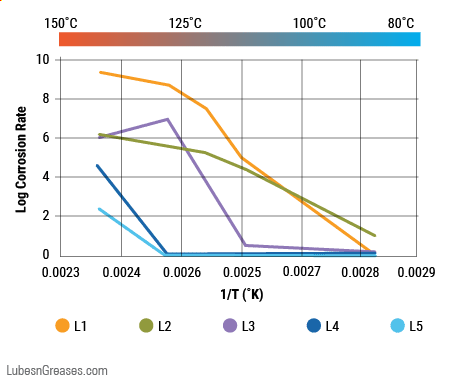
With the growing concern over tailpipe emissions and their harmful effects on the environment, stricter standards for carbon dioxide and pollutants like nitrogen oxide, unburned hydrocarbons and particulates have been put in place, resulting in hybrid and full EVs no longer being seen as uncommon, but the standard for the future.
Global sales of electric vehicles rose by 43% in 2020, passing 3 million, while overall vehicle sales slumped by 20%. This increase in electrification has created new needs for lubricants, leaving traditional lubricant manufacturers and associated aftermarkets adjusting for new revenue sources.
Transmission e-fluids are used in battery BEVs, hybrid EVs and fuel cell vehicles to improve efficiency and to extend the life of the drivetrain system. In EVs and HEVs, transmission fluids can be in contact with different parts of the electric motor, for example, electrical wires found within e-motors to efficiently cool the system and insulate electrical parts to prevent a short circuit. Transmission fluids also contain dispersants that can improve the friction and anti-wear properties of the fluid for use within an EV.
The current standard for lubricating electrified vehicle drivetrains is automatic transmission fluids, which are not optimized for EV and HEV performance. When designing transmission e-fluids, new unique requirements include thermal conductivity, electric resistivity, copper corrosion and wear resistance.
The drivetrain system of an internal combustion engine converts stored energy from a fuel into mechanical torque capable of rotating a set of wheels through a transmission. Heat created from combustion is controlled using different transmission fluids that lubricate various parts of the transmission as well as enhance cooling, reduce high operating temperatures, and protect metal surfaces from wear. An EV’s drivetrain is a simpler system, comprising far fewer components than a vehicle powered by an ICE. There are four main components that make up an electrified drivetrain: battery pack, DC-AC converter, electric motor and on-board charger.
Lithium-ion batteries are now considered to be the standard for modern EVs, holding the highest specific energy and a low self-discharge rate, compared to other batteries that store the energy needed to operate a vehicle. Lithium ion is a low-maintenance battery, there is no memory and no scheduled cycling required to prolong the battery’s life as well as the self-discharge is less than half, compared to other batteries like nickel-cadmium, which make them well-suited for modern fuel gauge applications.
During a discharge cycle, lithium atoms in the anode are ionized and separated from their electrons. The lithium ions move from the anode and pass through the electrolyte until they reach the cathode, where they recombine with their electrons and electrically neutralize.
The small size of lithium ions makes it possible to move through a micro-permeable separator between the anode and cathode, which make lithium-ion batteries capable of having a very high voltage and charge storage per unit mass and unit volume.
The specific energy of a lithium-ion battery depends on the type of cathode used and the constituting anode materials as well as their nano and micro-structures. One of the most important characteristics in electric mobility of a lithium-ion battery is the specific energy to extend the electric driving range without increasing the batter-pack weight. Safety concerns arise regarding the overcharging and overheating of these batteries that can be addressed through different properties found in transmission e-fluids.
Battery packs provide the necessary direct current output, which is then converted to alternating current and supplied to the electric motor. The direction of the flow of current is continuously and regularly interchanged, the electrical charge travels into the primary winding, then abruptly reverses and flows back out, to manage the electric drivetrain system. Both hybrids and EVs use relatively low-voltage DC batteries (about 210 volts) to keep the physical size down but use highly efficient high voltage (about 650 V) AC motor/generators.
Electric motors convert the electrical energy provided to mechanical energy, which is delivered to the wheels through the interactions of electric and magnetic fields thrusting the vehicle into motion. Fluids, like oils for the gear reducer, which is the EV’s transmission, must be tested for compatibility with electric and magnetic fields. Fire hazards due to static electricity discharge inside oil systems, particularly in an event of a car accident, must be taken into consideration when deciding on the fluid’s properties. An on-board charger converts the AC input through a charge port to a DC input and controls the amount of current flowing into the battery pack.
Transmission e-fluids are required for improving the efficiency and extending the life of EV drivetrain system. To guarantee protection of equipment, like the transmissions in an ICE vehicle, conventional gear oil formulations are typically blended at high viscosity. But increasing demand for efficiency gains across the whole drivetrain system in EVs and HEVs is driving toward the definition of low-viscosity gear oils.
A lower-viscosity transmission and drivetrain fluid can be used to lower overall drag and assist with extending battery life. Improving energy efficiency and wear control over a broad temperature range throughout the lifetime of the lubricant is a challenge within EVs. New drivetrain requirements must be met using different testing methods when designing EV/HEV transmission fluids.
As advancements are made in EV battery ranges and charging speeds, standard fluids are unable to control the temperature fluctuations that can occur during operation. Designing an efficient cooling system prevents the battery from overheating, keeping the passengers safe while the vehicle is in motion.
Battery thermal management systems are today’s most used technologies in EVs to monitor and optimize the thermal status of batteries. BTMS are a combination of thermoelectric cooling, forced air cooling and liquid cooling. Generally, two groups of liquids are applied for thermal management systems of batteries. One is dielectric liquid, which has direct contact with the battery cells. An example of this is mineral oil. The other is conducting liquid, which can contact the battery cells only indirectly. An example of this is a mixture of ethylene glycol and water.
Mineral oil is generally non-conductive, which makes it a good option as a coolant for EVs. The viscosity of fluid has a direct correlation to its flow resistance and load, where mineral oil is found to have a relatively high viscosity, which creates a requirement of higher pumping power. The battery pack in an EV is often submerged in a cooling system designed to transfer heat from the batteries to oil directly to eliminate the maximum temperature of the battery pack and guarantee the small temperature difference between batteries.
The thermal conductivity and the specific heat capacity of mineral oil have been tested to be between water and air, but the viscosity of an oil is much higher. Studies by the National Renewable Energy Laboratory show that under the same flow rate, the heat transfer efficiency of mineral oil is much higher than that of air because of the thinner boundary layer and higher thermal conductivity, which will consume more pumping power under the same flow rate due to the high viscosity of the oil.
However, studies also show that mineral oil mass flow rate has very limited effects on the thermal performance of the cell, which means that a lower mass would give similar performance as higher mass flow rates. Figure 1 shows the comparison of the temperature distribution along a single pouch cell plane at different mass flow rates, which show that temperature uniformity was well maintained below 1 degree Celsius. The mass flow rate increased 10 times, but the maximum cell temperature decreased only 6.71%, which underlines that mineral oil mass flow rate has a very limited effect on the thermal performance of the cell. Mineral oil can reduce the risk of explosion due to leakage of coolant into the battery system, allowing for a less bulky battery due to an effective direct cooling method. With mineral oil, temperature uniformity can be maintained below 1 degree, which is crucial to extend the lifetime of the oil and ensure operating safety.
Figure 1: Temperature distribution along battery cell in plane for different mass flow rates showing mass flow rate has limited effects on thermal performance

Ethylene glycol is a water-glycol mixture, a type of e-thermal fluid, used in the most well-known EVs out today, including the Audi eTron, BMW i3 and Tesla Model S. Ethylene oxide reacts with water to produce ethyne glycol that holds a low viscosity of 0.00161 Pascal seconds and a high thermal conductivity that consumes less power.
The low-temperature performance of rechargeable batteries in EVs is limited because of a narrow temperature range of the electrolyte, but ethylene-glycol can be used to expand the temperature range. In the Tesla Model S, ethylene-glycol is used to prevent water from freezing in cooler places, avoiding damage to the vehicle’s drivetrain. The Standard Specification for Glycol Base Engine Coolant for Automobile and Light-Duty Service (ASTM D3306-09) specifies the requirements for ethylene glycol or propylene glycol base engine coolants used in vehicles. The test states that when concentrates are used between 40% and 70% concentration by volume in water, or when prediluted glycol base engine coolants of 50% volume minimum are used without further dilution, they will function effectively to protect against freezing, boiling and corrosion. A glycol-water mixture is inexpensive and a well-established cooling fluid that indirectly cools EVs as it is pumped through pipes surrounding the battery.
In hybrid vehicles, the hybrid transmission operates at different conditions compared to an EV or ICE, which creates different requirements for lubricating fluids. The transmission temperature profile differs from the traditional ICE vehicle transmission operation, where localized temperature spikes occur when there is a large sudden current draw on the e-motor. Specific heat capacity and thermal and oxidative stability of fluids are both important requirements when developing transmission fluids for hybrid vehicles.
Fluids used in EVs require electrical insulation properties due to the close contact they may have with various electronic components. Dielectric properties must remain stable throughout the vehicle’s lifetime and adequately protect the components of the car in such conditions as rising temperatures, oxidation, humidity and particle absorption. A good dielectric fluid should have high dielectric strength, have high thermal stability and be compatible with different materials found in the motor. If the dielectric strength of a material or fluid is low, a strong enough electric field can force electrons to break free from molecules, which collide with other molecules and dislodge more electrons in a cascade, which results in dielectric breakdown.
The Standard Test Method for Dielectric Breakdown Voltage of Insulating Liquids Using Disk VDE Electrodes (ASTM D1816) is most used to measure the ability of an insulating liquid to withstand electrical stress without failure. The dielectric breakdown voltage serves to indicate the presence of contaminating agents, including water, dirt or any conducting particles in the liquid, one or more of which may be present in significant concentrations when low breakdown voltages are obtained. It is important to measure the amounts of stress that oil can withstand before failure because these contaminants may change the electric properties of a fluid significantly.
An ICE’s motor differs greatly from an EV’s e-motor in the delivery of power within the drivetrain. ICE delivers no torque if it is not rotating, therefore the load on the gears is very small at low internal speeds. EVs provide full torque from the start and maintain it over a wide range of speeds. High torque and low-speed combination place additional stress on drivetrain components, like gears and bearings.
In recent years, many lubrication failure problems owing to shaft voltages and bearing currents have been reported, which lead to instability, vibration and noise of a bearing and consequently more serious mechanical failure. This change in power delivery results in changes to the durability requirements of the transmission gears and bearings, requiring new testing methods for different transmission fluids.
Gear and bearing durability of lubricants today is predominately assessed by evaluating specific failure models in standardized component test methods. These methods screen for resistance to a particular failure mode, such as scuffing, pitting, fatigue spalling and others. These failure models also present a shaft voltage and bearing. The lack of rotation of gears in EVs introduces the issue of fluids draining off the surfaces when they remain stationary, leaving the gears unprotected. An improved method for lubrication in electric and hybrid vehicles uses a controllable electric oil pump to deliver target pressurized oil flow to the required areas, where the pressurized oil feed can also be used in bearings to dampen noise generated by changing load directions.
Copper is a key material used in EVs due to its high electrical conductivity and its ability to be used for electrical wiring and winding. EVs incorporate a large amount of copper in their design, used in electric motors, batteries, inverters, wiring, and in charging stations. Developing a fluid with copper combability is very important for the safety and energy efficiency of the vehicles. Preventing the copper from corroding becomes a new parameter for EVs. The current standard test for corrosiveness to copper is the Copper Strip Test (ASTM D130). This test determines the corrosiveness to copper of many different fuels used within transport, like diesel fuel, distillate fuel oil, and most important, lubricating oil. While this may be the standard test, an immersion test is not very informative for testing copper corrosiveness within an EV/HEV system.
A better measure of copper corrosion for electric motors could be one in which an electric current passes through the copper wire. New methods for monitoring the corrosion of copper by lubricating fluid additives have been developed through the measurement of the electrical resistance of copper wires. These tests can rapidly evaluate the corrosiveness of lubricants in real time at multiple temperatures and provide a corrosion “map” in the form of an Arrhenius plot as shown in Figure 2. Rates are determined by dividing the total thickness loss of the wire at the end of the test by the test time. The Arrhenius plots help enable accurate assessment of corrosion protection for different lubricants at different temperatures.
Figure 2: Arrhenius plot of corrosion rates for various transmission lubricants.

One growing area of research is the formulation of nanofluids. A small study led by Dr. Gangopadhyay, a technical leader of powertrain tribology in energy, propulsion, and sustainability in research and advanced engineering at Ford Motor Co., showed that adding carbon nanoparticles to ultralow viscosity oil improved the thermal conductivity by 15-20%. The conclusion that if the fluid can achieve 20-25% improvement from the base oil and another 20-25% improvement from nanoparticles, then it can reach a target number of 50% improvement for overall thermal conductivity.
Another study focused on the influence conductive and insulating nanoparticles at various concentrations have on the dielectric strength of transformer mineral oil. This method used the measurements of zeta potential to prepare and characterize these nanofluids using scanning electron microscope images of nanoparticles. The experiment found that these two types of nanoparticles significantly improved AC breakdown voltage and the magnitude of this enhancement depends on the nanoparticle concentration and the size and nature of the nanoparticle. The breakdown voltage increased twice that of mineral oil when using a conductive nanoparticle and increased 73% when using an insulating nanoparticle
As new EV registrations surge worldwide, new requirements and demands will arise as EVs gain more popularity over conventional vehicles that use an internal combustion engine. Requirements ranging from suitable thermal management, compatibility with materials, superior corrosion protection and proper electrical characteristics all encompass the road to efficient e-fluids. New demands will be placed on gear oils, coolants, and greases due to the new contact with electric modules, sensors and circuits, which will be affected by electric current and electromagnetic fields. New challenges will arise as the market shifts to adapt to the increase of electrification in vehicles working to meet the demands for lubrication that come into contact with components in electric drivetrains.
Alexandra Przyborowski is a senior in Chemical Engineering at State University of New York. Raj Shah is a director at Koehler Instrument Co. and an adjunct professor at State University of New York.
Figure 1: Patil, Mahesh & Seo, Jae-Hyeong & Bang, You-Ma & Kim, Dae-Wan & Ekanayake, Gihan & Singh, Gurpreet & Kim, Hak-Min & Choi, Yong-Hwan & Lee, Moo-Yeon. (2016). A Novel Design for Lithium ion Battery Cooling using Mineral Oil. 10.14257/astl.2016.141.34.
Figure 2: Hunt, G. J., Gahagan, M. P., and Peplow, M. A. (2017) Wire resistance method for measuring the corrosion of copper by lubricating fluids. Lubr. Sci., 29: 279– 290. doi: 10.1002/ls.1368.